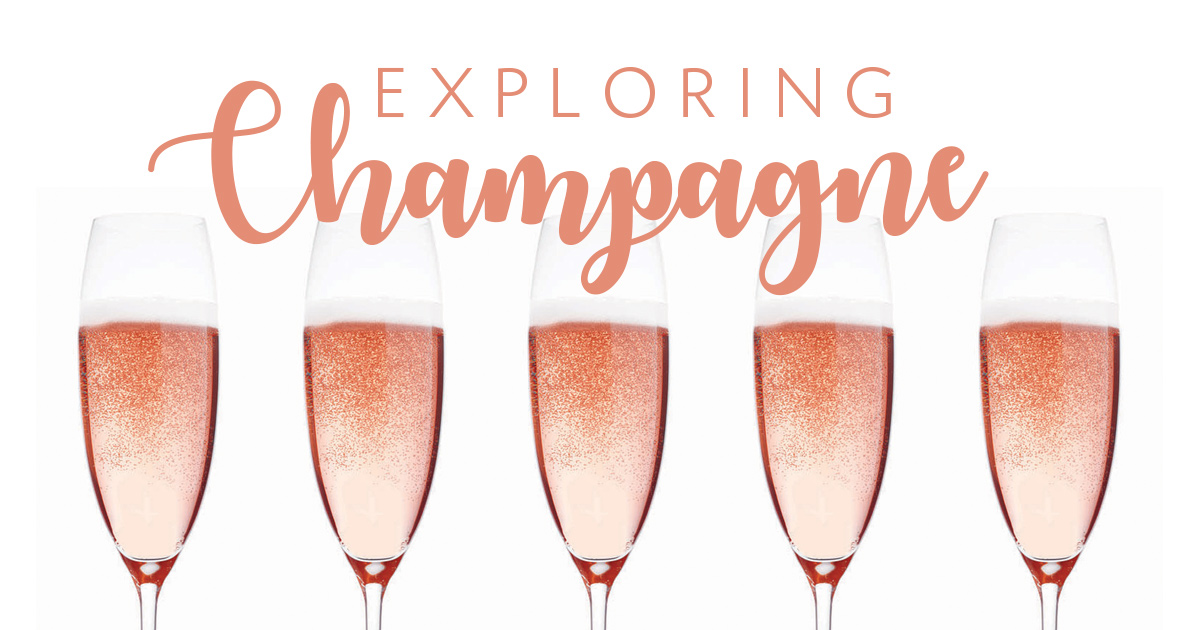Exploring Champagne
May 01, 2019
In the last issue of the Bon Giornale, we covered French wines and all of their different flavor profiles, the regions they come from, and the terroir as well as some of the laws and processes that guide the grape to the bottle. Astute readers may have noticed we excluded the Champagne region. We love this region so much, we decided it should be the focus of its own article! We joined server and sommelier Mariana Popescu for a lesson over lunch to learn a bit more about bubbles.
What's in a name?
In order for Champagne to qualify as authentic Champagne, the wine (by law) must be grown and bottled in the region. Champagne is located in Northern France and is known for its colder climate which creates the ideal conditions for the types of grapes that are most often used to make Champagne. The three most common grapes used are Chardonnay, Pinot Noir, and Pinot Meunier. Although there are some other grapes used, they are in very small quantities.
What's inside?
Unlike traditional French wine, each Champagne has its own tasting notes unique to the house (or brand), and this flavor profile is expected to be consistent as long as the bottle bears the name of the house. Most Champagne is what is known as "non-vintage," meaning that it is blended from multiple vintages (or years that the grapes are grown and harvested). Oftentimes because of this you will notice that bottles of Champagne are not denoted with a year like most other wines from France. If they are noted with a year then they are known as Vintage Champagnes which are typically much more sought-after and as a result, much more expensive.
How is it made?
Champagne uses a process known as secondary fermentation, where grapes are added to a bottle with sugar and yeast and left to age. It is this aging in the bottle that is responsible for the bubbles, a result of carbon dioxide released in the first fermentation. This science of secondary fermentation is extremely important.
Mariana's Picks
Mariana selected three Champagnes to try. As light, introductory-styles, she recommends the Nicolas Feuillatte and the famed Veuve Cliquot. In order to describe the tasting notes, it's important to understand the distinctions between Extra Brut (meaning extra dry and not having a lot of sweetness) and Brut (dry with a little bit more sweetness). The Nicolas Feuillate glass is light in aroma and flavor, a dry Champagne that is light and easy to drink. Veuve Cliquot has a similar color and aromatic profile to the Feuillate, but this classic Champagne has its own distinct branding and flavor profile. While you may be used to looking for tasting notes of wines aged in a barrel such as oak, Champagne is not aged in the same manner, so Iook for flavor notes more related to sugar and yeast which can result in sweet fruit flavors such as apples or buttery, bread-y flavor notes on the tongue, respectively. Mariana's third pick, Krug, tastes much different than the introductory Champagnes with heavier notes of fresh bread, which can be a desirable trait in some higher-end Champagnes.
What to pair?
The crisp freshness pairs well with desserts to balance out the sweetness, but it can also be a great choice with fish or meat dishes. Be sure to ask the servers and staff at Lake Park Bistro, or any of The Bartolotta Restaurants, to help you make the perfect selection of Champagne for your meal. Why wait for a special occasion to pop some bubbly? Make your reservation today!

